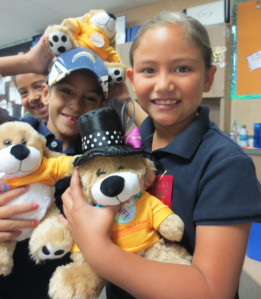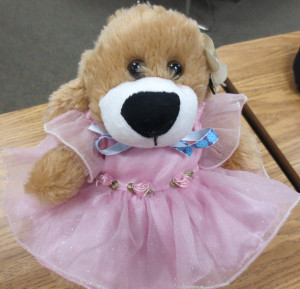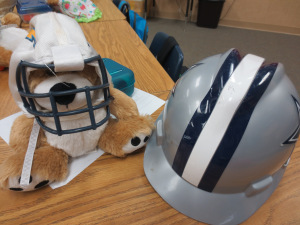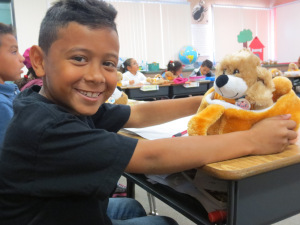"Just" Stuffed Animals?
 When I first designed this program for classrooms to help children learn to demonstrate more kindness and compassion towards dogs while also teaching them to read, I received some skepticism because these were "just" stuffed animals. Even the children themselves, just before they received their new adopted little buddies, were asking when the real dogs were coming to visit the classroom.
But then the children each received and named their dogs, and made them their own name tags and collars. They began to cuddle and pet their dogs as they participated in lessons. They turned their dog to face the book so their dog could "see" the pictures as they read, and they practiced their spelling words with them, lovingly patting their dog on their head.
When I first designed this program for classrooms to help children learn to demonstrate more kindness and compassion towards dogs while also teaching them to read, I received some skepticism because these were "just" stuffed animals. Even the children themselves, just before they received their new adopted little buddies, were asking when the real dogs were coming to visit the classroom.
But then the children each received and named their dogs, and made them their own name tags and collars. They began to cuddle and pet their dogs as they participated in lessons. They turned their dog to face the book so their dog could "see" the pictures as they read, and they practiced their spelling words with them, lovingly patting their dog on their head.
 We are now mid-way through the program, and today was Crazy Hat Day, so of course all of the children ran over to where I was, asking to have their pictures taken with their dogs and their Crazy Hats (pictured above on the left). And then I realized that it wasn't just hats that these dogswere wearing - many of them had their very own outfits. I asked the teacher about this.
We are now mid-way through the program, and today was Crazy Hat Day, so of course all of the children ran over to where I was, asking to have their pictures taken with their dogs and their Crazy Hats (pictured above on the left). And then I realized that it wasn't just hats that these dogswere wearing - many of them had their very own outfits. I asked the teacher about this.
"Well, I'm not sure how it started, exactly," she said, shaking her head with a smile on her face, "But before I knew it, they were all going to the dollar store and buying dolls just for the clothes - then throwing the dolls away so they could dress up their dogs!"
The bond that these children have formed with their dogs is clear by the way they nurture them, talk to them, cuddle with them, and care for them. As was so eloquently expressed by Alan T. Beck:
"Companion animals are our children's children.
The best thing we can do for our children is to help them be better parents."
 Especially for children who are unable to have a pet of their own due to allergies, family financial challenges or family circumstances, having a little stuffed animal to love and care for can offer valuable lessons for children. Young children are rarely in the role of nurturer or "caring for" (instead of being cared for), and pets (both real and imagined to be real) can provide valuable opportunities for children to learn responsibility, empathy, and compassion.
Especially for children who are unable to have a pet of their own due to allergies, family financial challenges or family circumstances, having a little stuffed animal to love and care for can offer valuable lessons for children. Young children are rarely in the role of nurturer or "caring for" (instead of being cared for), and pets (both real and imagined to be real) can provide valuable opportunities for children to learn responsibility, empathy, and compassion.
 Research suggests that young children have one foot permanently placed in reality and the other in imagination. What a wonderful gift for a young child to know that such an unconditional and loving friend exists for them when they are at school; a place where teachers have been warned against hugs, yet a place where so many children desperately need this form of comfort. I wonder if these kids would describe these dogs as "just" stuffed animals to them?
Research suggests that young children have one foot permanently placed in reality and the other in imagination. What a wonderful gift for a young child to know that such an unconditional and loving friend exists for them when they are at school; a place where teachers have been warned against hugs, yet a place where so many children desperately need this form of comfort. I wonder if these kids would describe these dogs as "just" stuffed animals to them?
